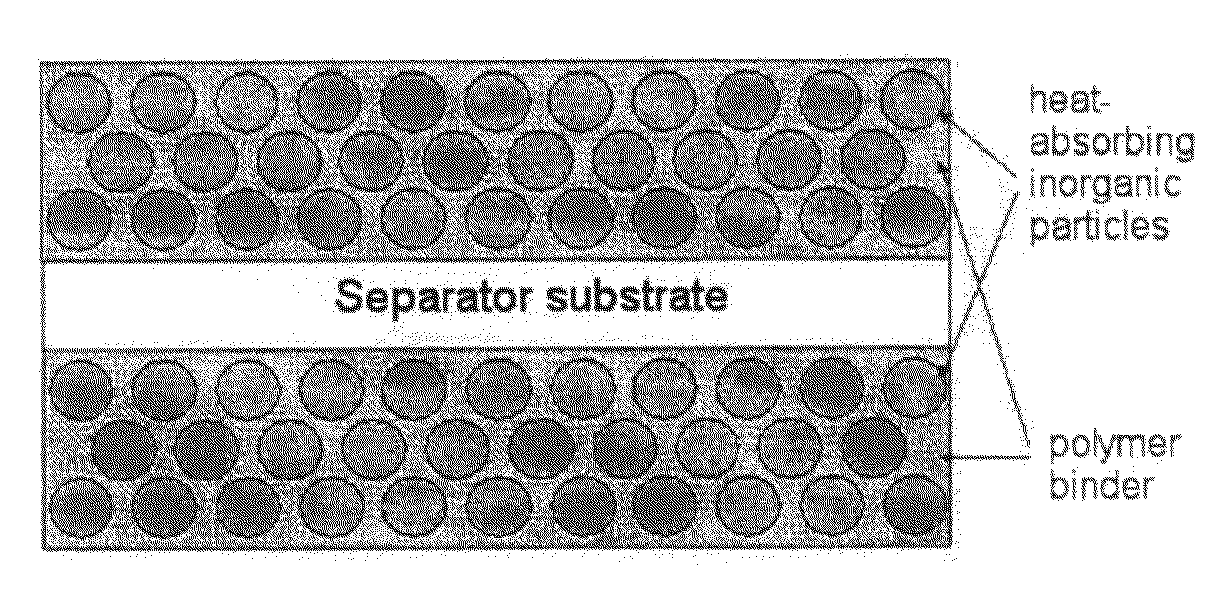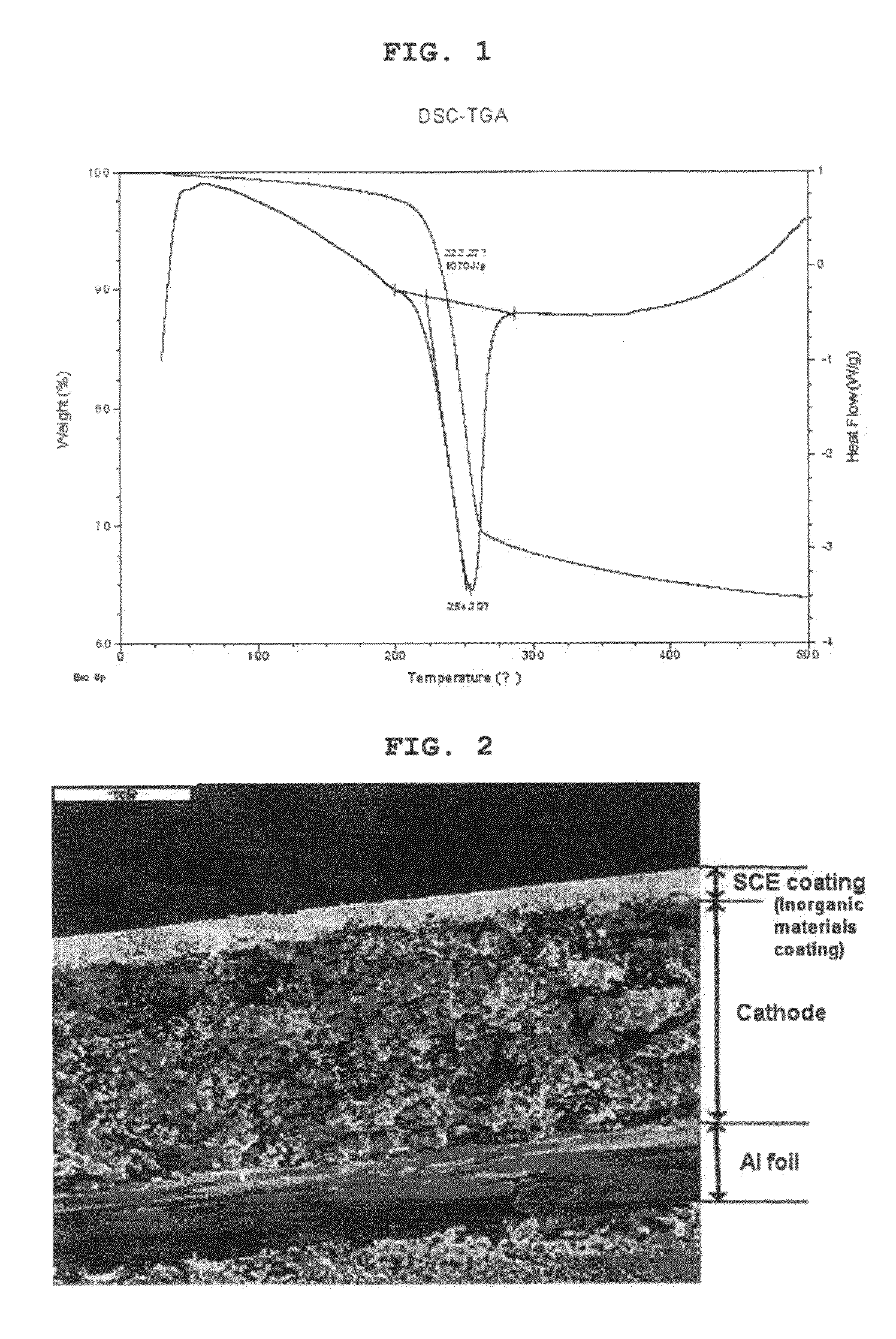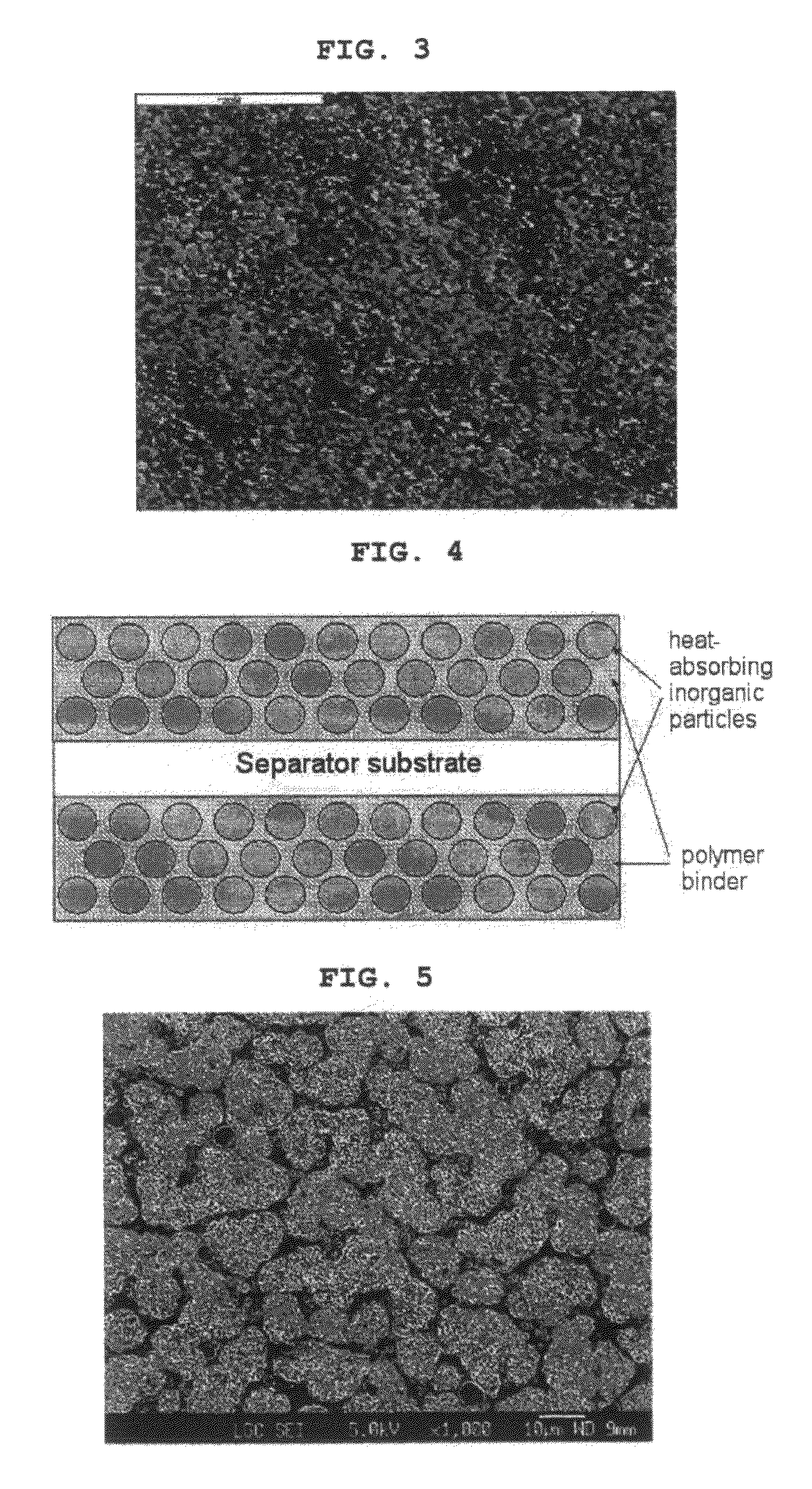Lithium secondary battery with enhanced heat-resistance
a secondary battery and heat-resistance technology, applied in the field of electromechanical devices, can solve the problems of high heat shrinking property, strict safety restrictions on lithium secondary batteries in terms of ignition and combustion of batteries,
- Summary
- Abstract
- Description
- Claims
- Application Information
AI Technical Summary
Benefits of technology
Problems solved by technology
Method used
Image
Examples
example 1
Manufacture of Anode
[0085]To N-methyl-2-pyrrolidone (NMP) as a solvent, 96 wt % of carbon powder as an anode active material, 3 wt % of polyvinylidene fluoride (PVDF) as a binder and 1 wt % of carbon black as a conductive agent were added to form mixed slurry for an anode. The slurry was coated on Cu foil having a thickness of about 10 μm as an anode collector, and then dried to form an anode. Then, the anode was subjected to roll press.
[0086](Manufacture of Cathode)
[0087]To N-methyl-2-pyrrolidone (NMP) as a solvent, 92 wt % of lithium cobalt composite oxide (LiCoO2) as a cathode active material, 4 wt % of carbon black as a conductive agent and 4 wt % of PVDF as a binder were added to form slurry for a cathode. The slurry was coated on Al foil having a thickness of about 20 μm as a cathode collector, and then dried to form a cathode. Then, the cathode was subjected to roll press.
[0088](Electrode Surface Coating)
[0089]About 5 wt % of PVdF-CTFE polymer (polyvinylidene fluoride-chlorot...
example 2
[0091]Example 1 was repeated to provide an organic / inorganic composite porous separator and a battery including the same, except that a mixture of the polymer and aluminum hydroxide (Al(OH)3) powder was coated onto a polyethylene separator having a thickness of about 18 μm (porosity 45%) instead of the preliminarily formed electrode.
[0092]After measuring the average pore size and porosity by using a porosimeter, the organic / inorganic composite porous separator had an average pore size of 0.4 μm and a porosity of 55%. FIG. 4 shows the structure of the organic / inorganic composite porous separator.
example 3
[0093]Example 1 was repeated to provide an organic / inorganic composite porous separator and a battery including the same, except that a mixture of the polymer and aluminum hydroxide (Al(OH)3) powder was coated onto a teflon sheet substrate instead of the preliminarily formed electrode, the solvent was dried, and then the teflon sheet was removed.
PUM
| Property | Measurement | Unit |
|---|---|---|
| Tg | aaaaa | aaaaa |
| Tg | aaaaa | aaaaa |
| dielectric constant | aaaaa | aaaaa |
Abstract
Description
Claims
Application Information
 Login to View More
Login to View More - R&D
- Intellectual Property
- Life Sciences
- Materials
- Tech Scout
- Unparalleled Data Quality
- Higher Quality Content
- 60% Fewer Hallucinations
Browse by: Latest US Patents, China's latest patents, Technical Efficacy Thesaurus, Application Domain, Technology Topic, Popular Technical Reports.
© 2025 PatSnap. All rights reserved.Legal|Privacy policy|Modern Slavery Act Transparency Statement|Sitemap|About US| Contact US: help@patsnap.com



